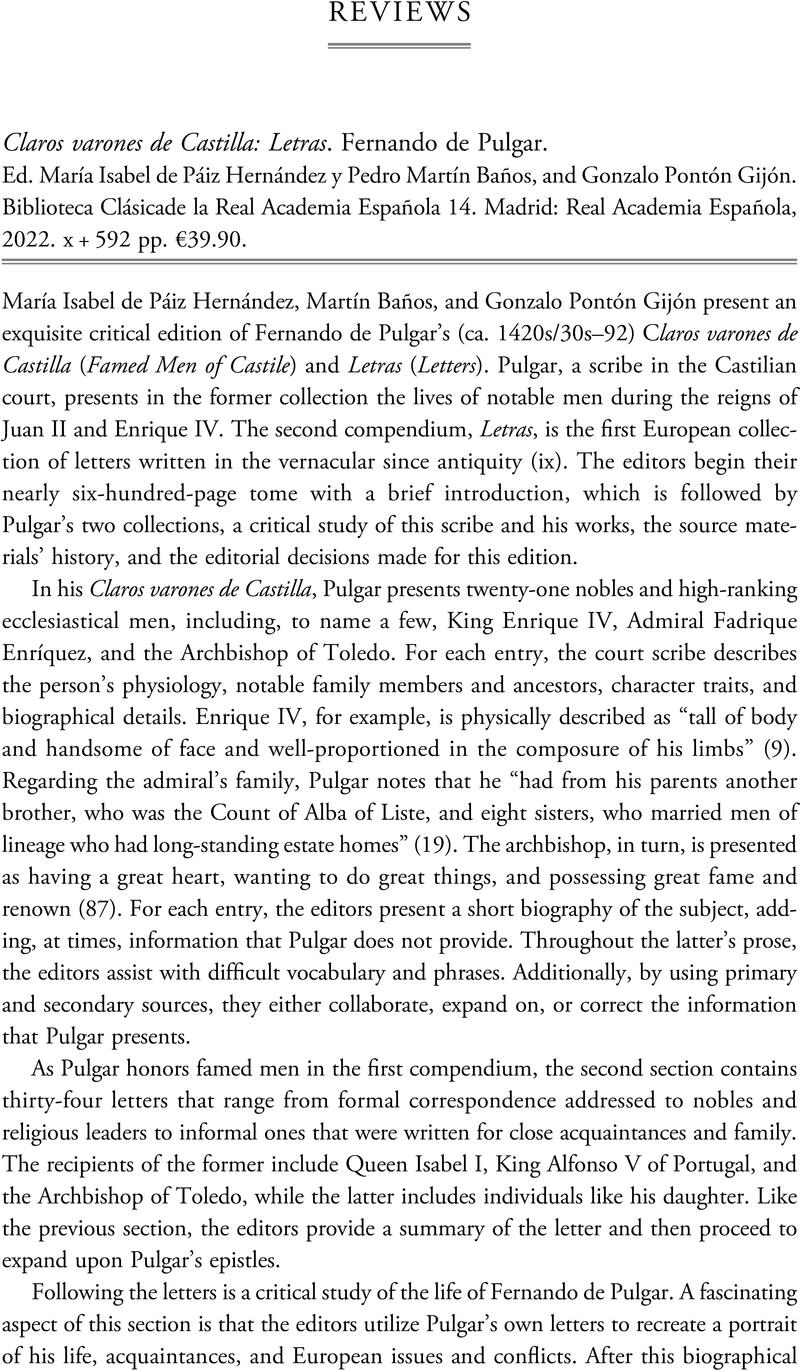No CrossRef data available.
Article contents
Claros varones de Castilla: Letras. Fernando de Pulgar. Ed. María Isabel de Páiz Hernández y Pedro Martín Baños, and Gonzalo Pontón Gijón. Biblioteca Clásicade la Real Academia Española 14. Madrid: Real Academia Española, 2022. x + 592 pp. €39.90.
Review products
Claros varones de Castilla: Letras. Fernando de Pulgar. Ed. María Isabel de Páiz Hernández y Pedro Martín Baños, and Gonzalo Pontón Gijón. Biblioteca Clásicade la Real Academia Española 14. Madrid: Real Academia Española, 2022. x + 592 pp. €39.90.
Published online by Cambridge University Press: 24 January 2024
Abstract
An abstract is not available for this content so a preview has been provided. Please use the Get access link above for information on how to access this content.

Information
- Type
- Review
- Information
- Copyright
- Copyright © The Author(s), 2024. Published by Cambridge University Press on behalf of the Renaissance Society of America


